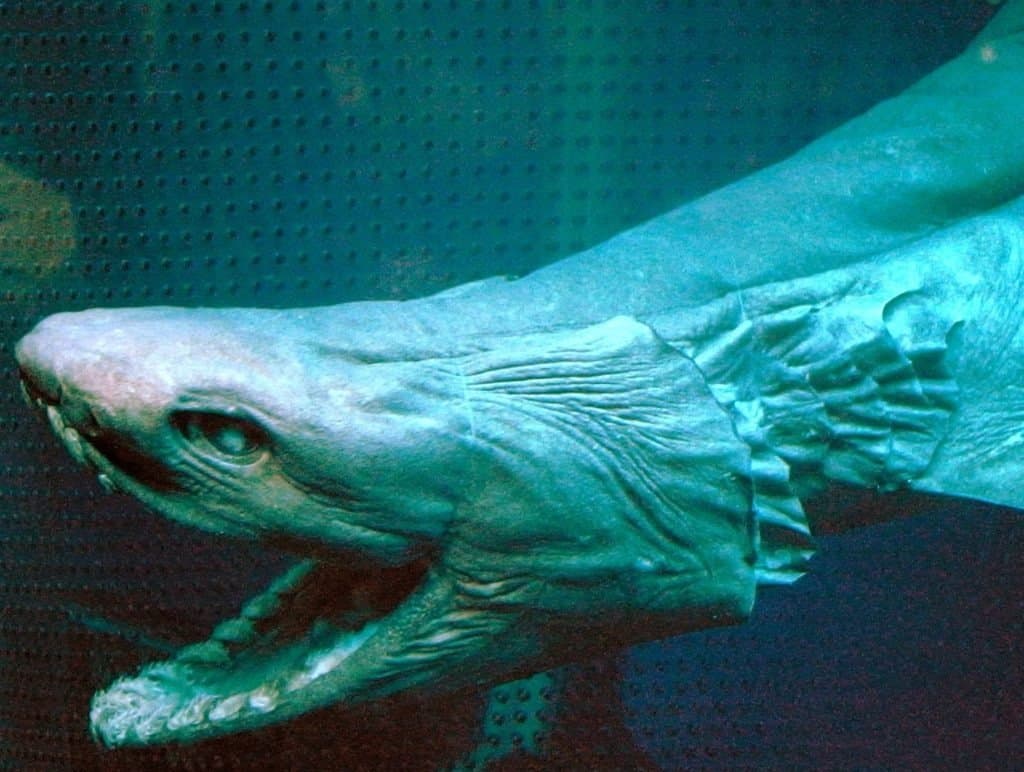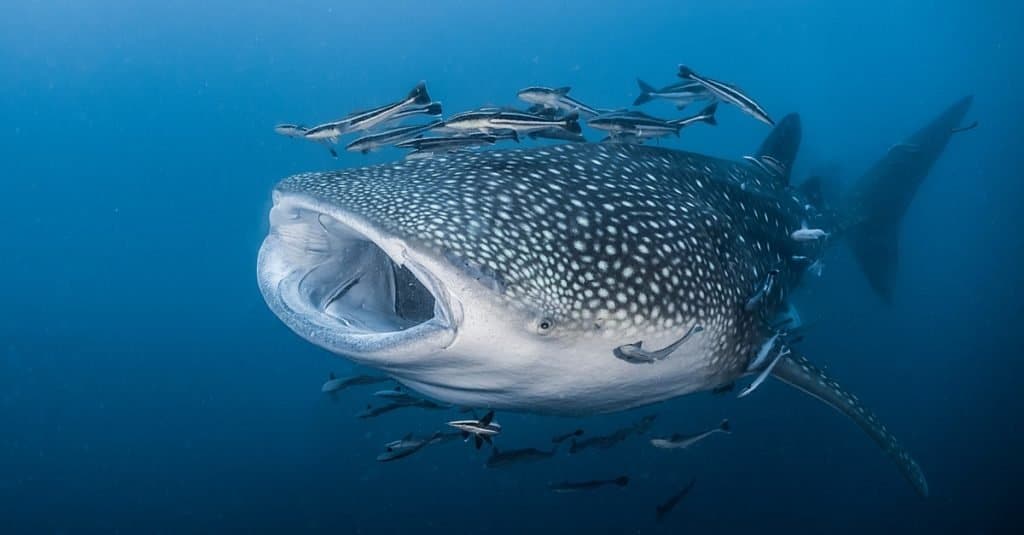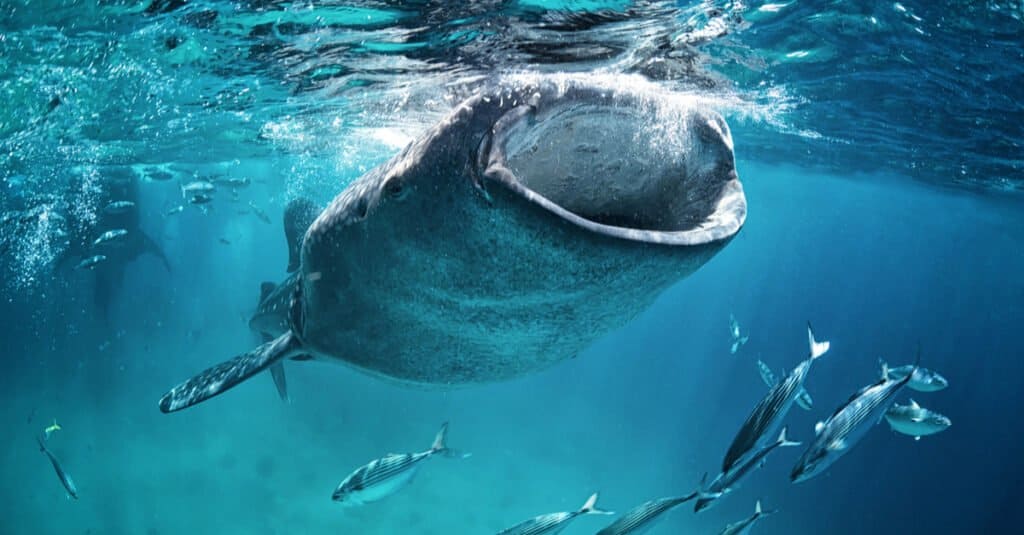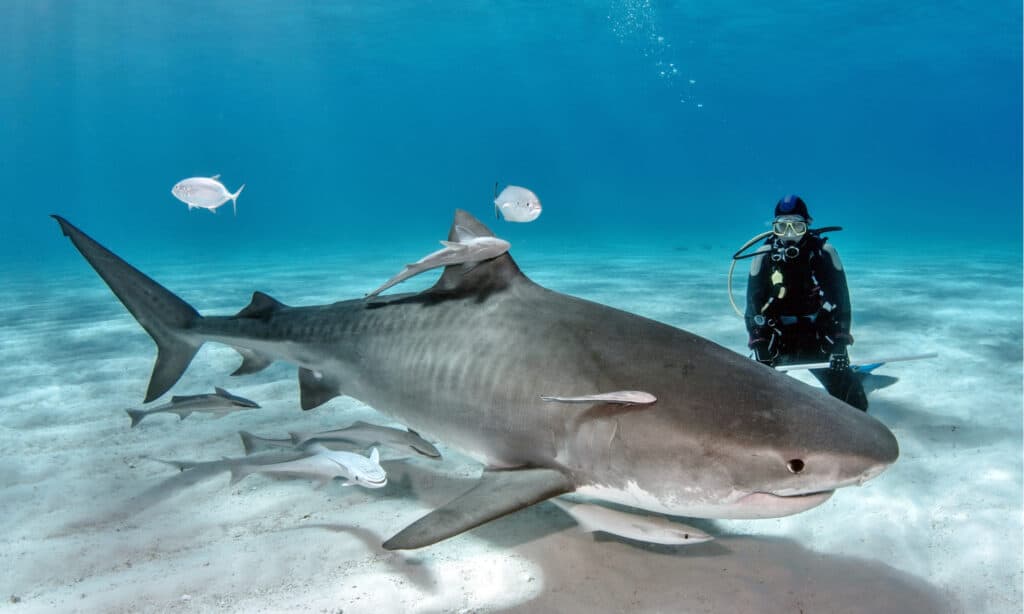Is it safe to go back in the water? A cool swim in the ocean sounds lovely, but Jaws aficionados may not think it’s worth braving the sharks. Despite their reputation, these fishy predators don’t attack humans nearly as frequently as people think. Given how many sharks are in the world, this is a good thing!
Read on as we discover the number of sharks in the ocean, what they eat, and whether or not you should be afraid of them.
How Many Sharks Are in the World?

There are as many as 1 billion sharks in the world, 1 for every 7-8 humans.
©HakBak/Shutterstock.com
Estimates show that there are as many as 1 billion sharks in the world. This means there’s a shark for every seven or eight humans. They can be found in every ocean in the world and just about every oceanic habitat, including the open ocean, deep sea, coral reefs, shallows, and beneath Arctic ice.
Sharks are divided into 8 orders comprising over 500 total species. Astonishingly, they have been around for 450 million years, making them “living fossils.”
Types of Sharks
Sharks are elasmobranch fishes, a group that also includes skates and rays. They have no bones, only cartilage. Below are the 8 different orders of sharks:
Lamniformes
Also known as mackerel sharks, Lamniformes include the most famous (or infamous) sharks of all time. Most are apex predators; some, however, are filter feeders. They tend to have a higher body temperature than the surrounding water and prefer warm, tropical habitats. They range from 3 feet to 32 feet in length.
Examples include great white sharks, goblin sharks, basking sharks, and mako sharks.
Hexanchiformes

There are over 500 species of sharks, including the frilled shark.
©OpenCage / CC BY-SA 2.5 – License
Also known as six-gilled sharks or cow sharks, Hexanchiformes evolved 150 million years ago. This makes them the most primitive living shark. This order is distinguished by six or seven pairs of gills. They can be anywhere from 8 to 16 feet long and stick to the cold waters of the deep sea.
Examples include cow sharks, frilled sharks, bluntnose sixgill sharks, and sharpnose sixgill sharks.
Carcharhiniformes
Also known as ground sharks or whaler sharks, Carcharhiniformes are the largest order of sharks, containing over 270 species. They range in size from 18 inches to 20 feet. Their choice of habitat is incredibly broad and depends on the species. A nictating eyelid (a transparent protective membrane) allows the sharks to see while avoiding damage to the eyes.
Examples include hammerhead sharks, tiger sharks, ocean whitetip sharks, and bull sharks.
Squaliformes
Also known as dogfish sharks, Squaliformes comprise 126 species. They prefer to swim in the deep sea, usually along the ocean floor. Some species have developed bioluminescence in response to their dark environment. Sharks in this order range from 8 inches to 21 feet in length.
Examples include dwarf lantern sharks, Greenland sharks, Pacific sleeper sharks, and kitefin sharks.
Heterodontiformes
Also known as bullhead sharks, Heterodontiformes are more petit on average than sharks from other orders. The largest is only 5 feet long. The order contains 9 species, most commonly found in temperate or tropical coastal waters. They sport distinctive blunt noses and bulging foreheads.
Examples include horn sharks, zebra bullhead sharks, Galapagos bullhead sharks, and Port Jackson sharks.
Pristiophoriformes
Also known as sawsharks or carpenter sharks, Pristiophoriformes are mysterious sharks frequenting temperate and tropical oceans. They use their distinctive saw-like noses to slash at their prey. Though they appear frightening, they rarely grow over 5 feet in length.
Examples include sixgill sawsharks, Bahamas sawsharks, largetooth sawsharks, and knifetooth sawsharks.
Orectolobiformes

Whale sharks are examples of Orectolobiformes.
©Onusa Putapitak/Shutterstock.com
Also known as carpet sharks or wobbegongs, Orectolobiformes prefer the Indian and Pacific Oceans. They can be easily identified by their mouths, which sit at the very front of their head, and their whiskery barbels. Many also sport various carpet-like patterns on their skin. They range in size from 12 inches to well over 40 feet.
Examples include whale sharks, zebra sharks, nurse sharks, and bamboo sharks.
Squatiniformes
Also known as angelsharks, Squatiniformes enjoy temperate and tropical waters. This order contains only 13 species. They tend to live along the ocean floor. Because of their flat bodies and wing-like fins, it’s easy to mistake them for skates or rays.
Examples include sawback angelsharks, sand devils, African angelsharks, and clouded angelsharks.
Shark Diet and Predators
All sharks are carnivores, relying on the flesh of other creatures to survive. They eat a wide variety of fish, including other sharks. They also eat dolphins, seals, sea lions, sea turtles, and some invertebrates. If the opportunity presents itself, they will even eat birds like seagulls.
Sharks have few predators, but that doesn’t mean they don’t need to watch their backs. Besides other sharks, they may be attacked by killer whales (orcas), sperm whales, or even octopi. Of course, humans also prey on sharks from time to time.
The World’s Biggest Shark

Whale sharks are the biggest sharks in the world.
©Fata Morgana by Andrew Marriott/Shutterstock.com
The world’s biggest sharks are whale sharks. They also hold the title of the world’s largest living fish. These creatures can grow over 40 feet long and usually weigh around 15 tons. Despite being so massive, they are known as gentle giants, often allowing divers to hitch rides by holding onto their dorsal fins. Though they have teeth, they don’t use them, preferring to filter-feed on plankton and krill.
The largest whale shark ever recorded came in at 61.7 feet in length, or 18.8 meters. It weighed a whopping 46 tons!
The World’s Smallest Shark

The smallest shark in the world is the dwarf lantern shark.
©By Javontaevious – Took a photographPreviously published: Javontae Murphy@ Facebook, CC BY-SA 3.0, https://en.wikipedia.org/w/index.php?curid=37516033 – License
The world’s smallest shark is the dwarf lantern shark. It’s so small it can fit in a human hand! It averages between 6.3 and 7.9 inches in length. Dark brown in color, it is also bioluminescent, a necessary adaptation for its deep-sea habitat.
Unlike whale sharks, this shark is aggressive in groups, often attacking much larger prey like squid and octopus.
Do Sharks Eat Humans?

Shark attacks on humans are rare.
©Tomas Kotouc/Shutterstock.com
Sharks do occasionally attack and eat humans, but their reputation as man-eaters has been greatly exaggerated. Most sharks will not bother humans as long as humans don’t bother them. Sharks may mistake humans for seals or sea lions, but once they realize their mistake, they usually back off. However, they may persist in their attack if they feel they are being directly threatened.
Some species of sharks are more dangerous than others. Great whites consistently stand as the number one shark aggressors, followed by tiger and bull sharks.
Endangered Shark Species
Unfortunately, sharks’ undeserved reputation as bloodthirsty man-eaters has led to many people hunting them out of fear. Humans also hunt them for their fins, which can be made into an expensive Asian soup. Overfishing has caused the depletion of many shark populations and threatens oceanic ecosystems.
The International Union for Conservation of Nature (IUCN) classifies scalloped and great hammerhead sharks as endangered. Vulnerable species include the oceanic whitetip, porbeagle, and smooth hammerhead sharks.
Despite their fearsome reputation and terrifying appearance, sharks are a vital part of the ecosystems of our world. Not only that, but they make great swimming companions for intrepid divers.
The photo featured at the top of this post is © iStock.com/Peter_Nile
Thank you for reading! Have some feedback for us? Contact the AZ Animals editorial team.






